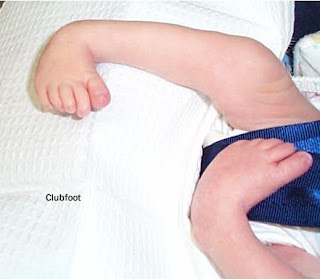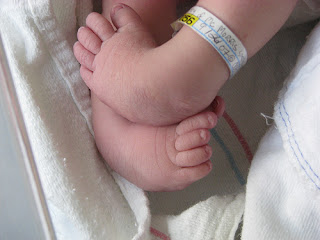clubfoot is a general term used to describe a common deformity in which the feet change / bend of the state or the normal position. Some of foot deformities including talipes deformity of the ankle called the talus derived from the word (which means ankle) and plague (which means the foot). Deformities of the foot and ankle are sorted depending on the position of the ankle and foot abnormalities. Talipes deformity are:
- Talipes varus: inversion or bend into the>
- Talipes valgus: eversion or bending outward
- Talipes equinus: plantar flexion of the fingers which is lower than the heel
- Talipes calcaneus: dorsiflexion where the radius is higher than a heel
Frequency of clubfoot from the general population is 1: 700 to 1: 1000 live births in which the boy two times more often than women. Based on the data, 35% occurred in monozygotic twins and only 3% in dizygotic twins. This emphasizes the role of genetic factors
Pathophysiology
The exact cause of clubfoot is not known until now. Some experts say that the disorder was caused by an abnormal position or limited movement in the womb. Another expert said that the abnormality occurs due to abnormal embryonic development of the current developments towards flexion and foot eversion at month 7 of pregnancy. Growth is impaired in these phases will cause a deformity which is influenced also by the intrauterine pressure.
Evaluation of diagnostic
This deformity can be detected early during the prenatal ultrasonography or detected at birth.
Therapeutic management
Rapid growth during the period of the infant allows for the handling of remodeling. Treatment begins when abnormalities are obtained and consisted of three stages, namely:
1) correction of deformity,
2) correction to maintain normal muscle balance is achieved,
3) observation and follow-up to prevent the return of the deformity.

Correction of CTEV is with manipulation and serial application of the "cast" that starts from birth and continue until the goal is achieved correction. This correction is supported also by stretching exercises of the structure of the medial side of foot and exercise a weak contraction of the structure on the lateral side. Manipulation and the use of "cast" is repeated on a regular basis (from several days to 1-2 months at intervals of 1-2 months) to accommodate the rapid growth in this period. If manipulation is not effective, surgical correction to improve the structure of the redundant, extend or tendon transplant. Then ektremitas will be in the "cast" until the goal is achieved correction.
Prognosis

Some cases showed a positive response to treatment, whereas some other cases show that the response time or do not respond at all to Treatment. Parents should be informed that the results of the Treatment is not always predictable and depends on the severity of the deformity, the child's age at intervention, the development of bones, muscles and nerves. Long-term foot function after Treatment is generally good but the study results show that the correction as adults will show a 10% foot smaller than usual.
Tags : CTEV Foot, CTEV Treatment, clubfoot club, the clubfoot, clubfoot treatment, clubfoot deformity, what is clubfoot,clubfoot surgery, congenital clubfoot
No comments:
Post a Comment